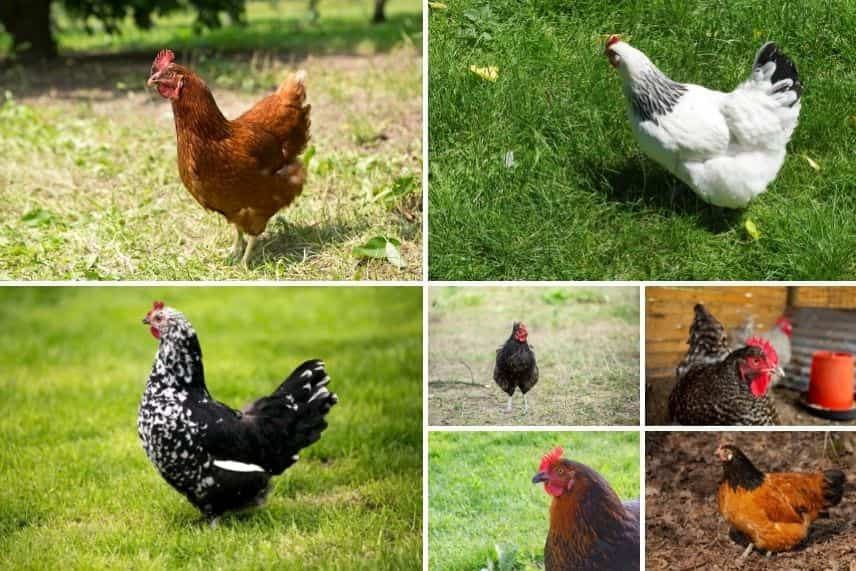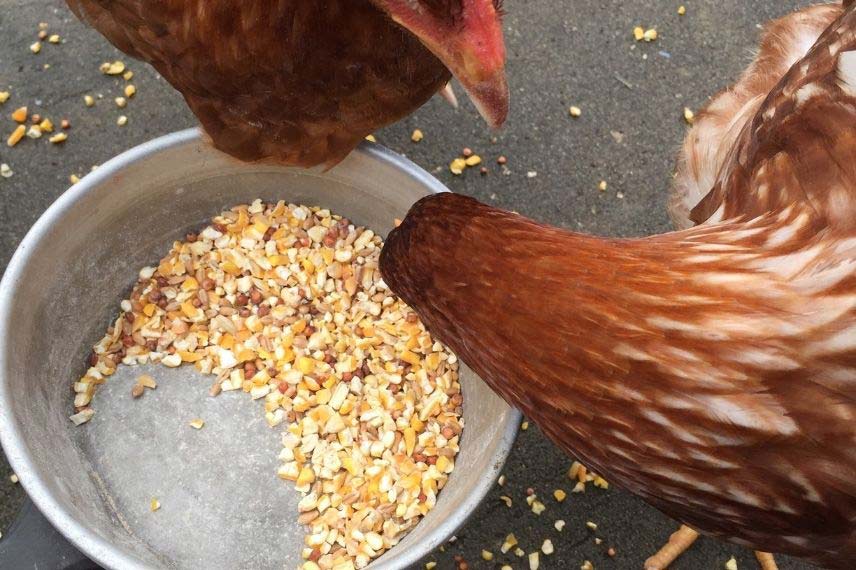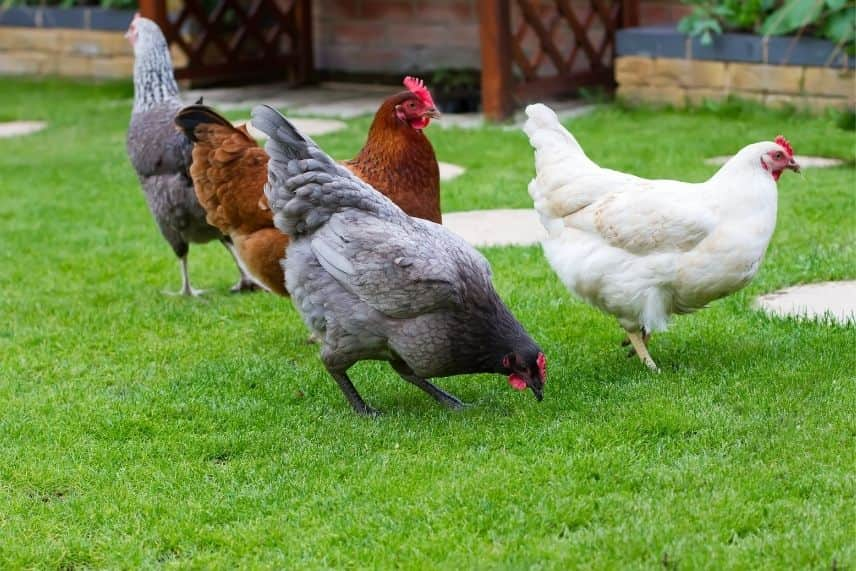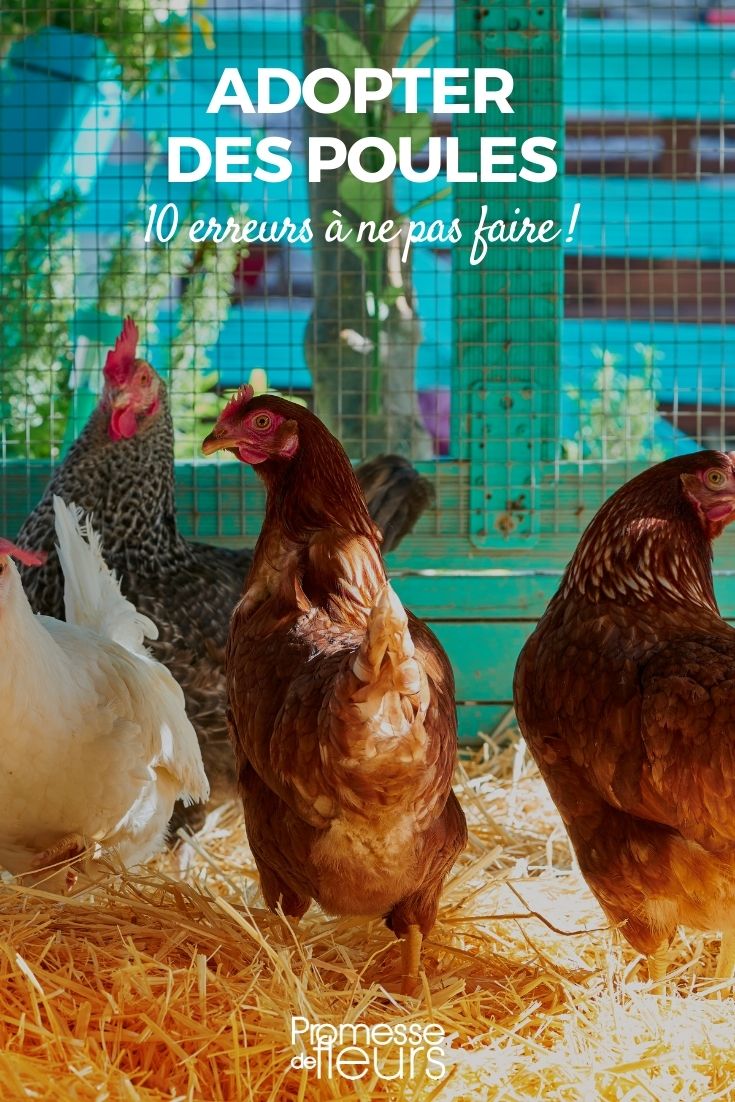
Adopting Chickens: The 10 Mistakes to Avoid
Our 10 tips for welcoming your laying hens in good conditions
Contents
Welcoming chickens into your garden… why not? Some local communities even encourage this to reduce waste (let’s remember that sorting organic waste will be obligatory for everyone by the end of 2023). However, adopting chickens requires a minimum of thought. Beyond the always exciting egg collection, chickens require care and bring hygiene-related constraints, as well as costs that one must be fully aware of before embarking on the purchase or construction of a chicken coop. Let’s explore the mistakes to avoid when adopting chickens.
Disregard your surroundings and the law.
Certainly, you have no obligation regarding your neighbours and are free to welcome hens, or even a rooster, onto your property. This includes urban areas. However, it is courteous to inform your neighbours about the arrival of the poultry. This way, you can gauge their reaction. Moreover, in case of holidays, these same neighbours might be tasked with closing and opening the chicken coop. For a few fresh eggs, of course!
Similarly, before embarking on the construction of the chicken coop, it is advisable to consult your local council or the regulations of the housing estate where you live. Some prohibit it while others impose restrictions. I also explain what the law requires regarding chicken coops.
Making the wrong choice of hens
The primary reason for keeping chickens is, of course, the desire to enjoy fresh eggs while also helping to reduce your kitchen waste. However, a chicken is not a bin!
If you want laying hens known for their egg-laying ability, consider breeds such as the Red or Farm Hen, Sussex, Harco, Vorwerk, Gournay Hen, Coucou de Rennes, and Marans (which lays chocolate eggs). Don’t forget about local breeds that are adapted to your region’s climate, such as the Naked Neck of Forez, Gatinaise, or Géline de Touraine.

The Red or Farm Hen, Sussex, Harco, Vorwerk, Gournay Hen, Coucou de Rennes, and Marans are excellent layers.
If you wish to have your hens brood and therefore welcome chicks, you will first need a rooster. Then, choose breeds of hens known for being good broodies, such as Sussex, Wyandotte, or Orpington. If you prefer aesthetics, you might opt for the Silkie (which is an excellent mother!) or the Padoue. Or the Araucana for its green eggs!
Planning for a chicken coop that is too small
Whether made of wood, plastic, or sturdy materials, a chicken coop ensures the comfort, well-being, and safety of hens. It is understood that the coop refers solely to the place where they lay eggs and sleep. Experts tend to recommend 0.5 m² per hen, so a 2 m² coop is more than sufficient for 3 to 4 hens. In a smaller coop, your hens would not be comfortable, which could lead to stress, causing pecking or a halt in egg-laying.
However, it is better to plan for a larger space from the outset. Why? Because hens are very endearing animals, and it is not uncommon to expand your flock by welcoming new hens.
Additionally, beyond its size, the coop must be sufficiently functional for easy cleaning. It should be equipped with nesting boxes and a perch (although my hens have never wanted to perch, preferring the nice straw litter for sleeping!). And it should have a door or hatch that closes easily and securely.
Also, keep in mind that when it comes to cleaning and longevity, nothing beats a sturdy or plastic coop. Wooden coops encourage the appearance of red mites.
Offering them an outdoor enclosure that is too narrow
Once again, this is a common mistake made by beginner chicken keepers. A chicken needs to stretch its legs and forage. Therefore, it requires a secure run or grassy area where it can live its life, scratch the soil in search of a few insects, and rest. Allow 5 to 10 m² per chicken to meet its needs.
This run must be perfectly secure, and you can place inside it a shelter to protect from rain and provide shade, equipped with a perch. A dust bath, filled with sand or ash, can be added for taking “baths” that help it get rid of vermin and parasites hidden in its feathers.

The chicken run must be large enough and perfectly secure
Feel free, from time to time, to close off part of your run to allow the grass to grow. Indeed, wherever the chickens go, every blade of grass perishes!
Don’t forget to organise a sheltered area in their run for placing feeders and the water trough.
Not being aware of the importance of hygiene
Raising chickens is not just about collecting eggs. It also involves caring for your chickens, and maintaining good hygiene in the chicken coop is essential. A clean coop ensures the well-being of your chickens and, most importantly, their health. Indeed, it is often in a dirty and poorly maintained coop that parasitic infestations, which can be fatal for chickens, develop.
Thus, take the time to remove droppings at least every 2 to 3 days, ideally every day. Use this opportunity to shake up the litter layer. Once a week, the soiled litter will be removed and replaced with clean litter, to which a bit of diatomaceous earth can be added. Take the time to clean the feeders, drinkers, and perches with liquid black soap, white vinegar, or baking soda.
Once or twice a year, the coop will be leached from floor to ceiling.
Discover how to use chicken droppings in the garden.
Neglecting potential predators
A fox or a marten attack, the main predators of chickens, or even a bird of prey, can happen to anyone. Whether you are in the countryside or an urban environment, predators are everywhere. It is therefore essential to ensure the safety of your chickens, especially at night, which is a prime time for attacks.
There is no question of letting your chickens sleep outside, even on a beautiful starry summer night! Every evening, your chickens will naturally return to their coop, and you must lock them in until the following morning. It’s a hassle, but it’s crucial for the safety of your hens. If you enjoy sleeping in or going out at night, the best solution is to install an automatic door that opens and closes at times you set.
Also, make sure to regularly inspect your coop, as even a small hole can allow a marten to enter.
The enclosure must also be perfectly secure. You should bury the wire mesh at least 30 cm deep or place boards vertically or horizontally to prevent a fox from getting in. Installing a net or a chicken run is also recommended against birds of prey.

The fox is the main predator of the chicken
Find all my detailed tips for combating chicken predators.
Not varying chickens' diet sufficiently
A hen does not solely feed on kitchen scraps or peelings. For it to lay properly and remain healthy, it requires a varied, balanced diet rich in vitamins, minerals, and trace elements. Just like us!
As a reminder, hens are omnivores, so they include plant-based foods in their diet such as seeds, herbs, and cereals, as well as animal-based foods, which are a source of protein, like insects, snails, or earthworms.
Cereals can be easily found in garden centres or specialised shops, or even better, from a nearby farmer. Opt for cereal mixes that contain wheat, barley, maize, soya, rapeseed, linseed, and sometimes crushed peas.
→ Also read: what to feed laying hens?

Hens should have a mix of cereals available
To satisfy their appetite or to compensate for a run that is too poor in earthworms, do not hesitate to give them dried insects. This is a significant source of protein. As for oyster shells, they are essential for calcium intake.
If you have the time, especially during cold weather, prepare thick mash or soups, served warm, made from pasta, rice, lentils, or chickpeas mixed with cooked vegetable peelings. Of course, table scraps can be given, but in moderation. And not just anything! Some foods are prohibited due to their toxicity or high concentration of salt or sugar.
Finally, a hen drinks a lot, so it must always have water available.
Do not collect the eggs regularly.
It’s obvious, but it’s worth mentioning, especially if you’ll be away for an extended period. Eggs must be collected every day, firstly to prevent breakage (which could encourage hens to eat their own eggs as they find a good amount of fat and calcium), and secondly to avoid attracting opportunists like corvids (magpies, crows, and ravens) or rats.

Eggs must be collected every day
So, if you’re planning a holiday, ask a neighbour to collect the eggs, which they will be happy to eat.
Do not anticipate the incurred costs.
By adopting hens, you save on the purchase of eggs. However, they do not lay eggs 365 days a year… Laying can indeed stop during extreme cold, in the summer heat, or during moulting.
That said, adopting hens also incurs costs. You will need to budget for the cost of the henhouse, whether you buy or build it, as well as their feed and bedding. Don’t forget the potential treatments to combat certain parasites or diseases.
Allow them to frequent your flower beds and vegetable garden.
Legitimately, you may want to give your hens a bit of freedom. But be careful, they are true destroyers on legs. If you care about your well-mulched flower beds or your freshly planted vegetable garden with young plants, don’t let your hens roam free.

If you want to maintain a pristine lawn, don’t let your hens roam free!
However, if you cultivate the wild side of your ornamental garden, don’t hold back.
During the winter period, when your vegetable garden is empty, let your hens wander there. They will not only help you get rid of adventive plants but also of harmful insects and larvae that may have found refuge, while aerating the soil with their scratching.
- Subscribe!
- Contents
































Comments